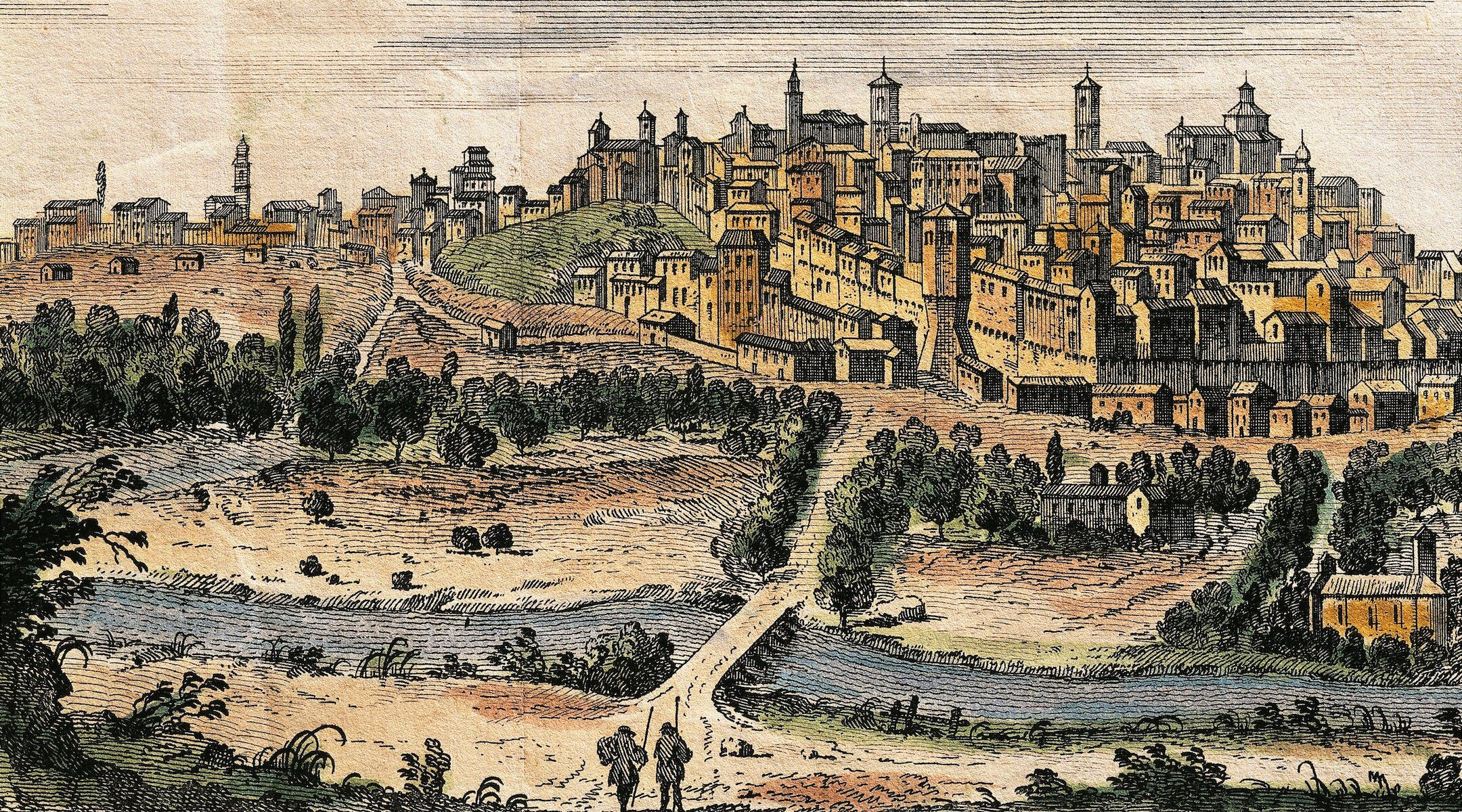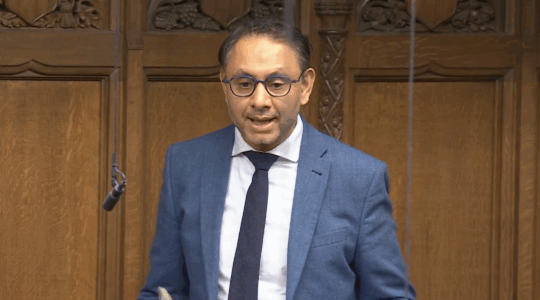(JTA) — Starting tonight, many Jews around the world will celebrate Purim in the same ways: by reading the story of the heroic Queen Esther, dressing in festive costumes and drinking alcohol.
For many of the 900 or so Jews in Bosnia and Herzegovina, it will be the first of two annual Purim celebrations.
Since 1820, locals have also observed the Purim de Saray (Saray being a root of the word Sarajevo) early in the Hebrew calendar month of Cheshvan, which usually falls in October or November of the Gregorian calendar.
In that year, the story goes, a local dervish was murdered, prompting the corrupt Ottoman pasha of Sarajevo, a high-ranking official, to kidnap 11 prominent Jews, including the community’s chief rabbi, a kabbalist named Moshe Danon. The pasha accused them of the murder of the dervish — who had converted from Judaism to Islam — and held them for ransom, demanding 50,000 groschen of silver from the Jewish community.
But the pasha, who was a transplant from elsewhere in the Ottoman empire, deeply offended the multiethnic populace of Sarajevo, who considered the Jewish community — then around one-fifth of the city’s entire population — an essential part of their home. So local Jews, Muslims and Christians rebelled together, storming the pasha’s palace and freeing the imprisoned community leaders.
Ever since, Bosnian Jews have celebrated that story by visiting the grave of the Sarajevan Jewish historian Zeki Effendi, who was the first to document it. Dozens also take part in a pilgrimage every summer to the grave of Rabbi Danon, who is buried in the south of Bosnia, not far from the Croatian border, where he died on his way to what was then Ottoman-controlled Palestine.
For centuries, several other Jewish communities around the world observed their own versions of Purim based on stories of local resistance to antisemitism, inspired by Esther and her uncle Mordecai, who in the original holiday story save all of Persia’s Jews from execution in the 5th century BCE.
Here are the stories behind some of those traditions.
Ancona, Italy
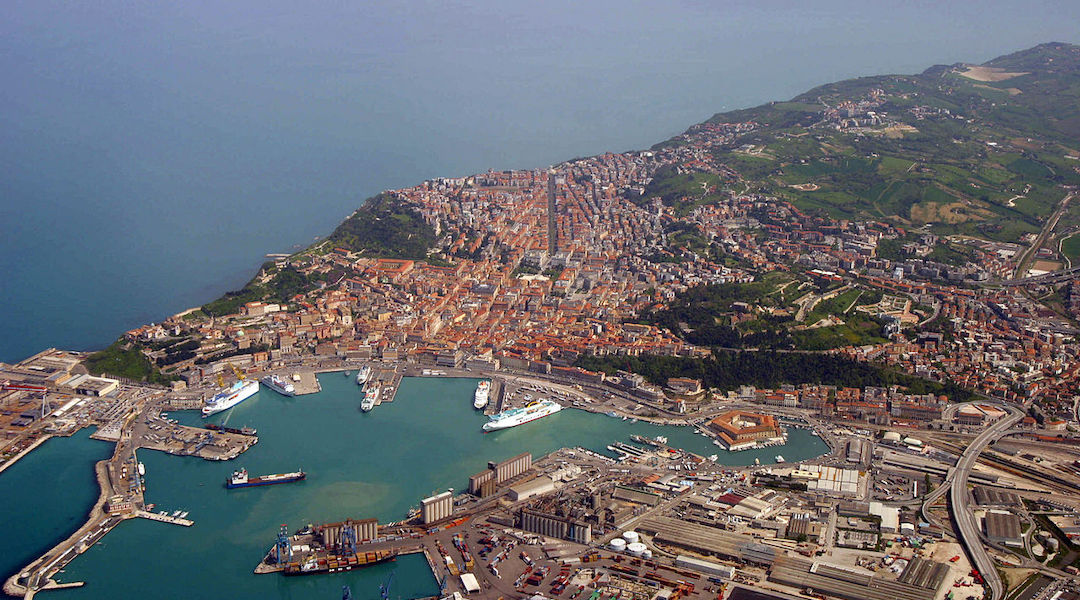
An aerial view of Ancona in 2006. (Wikimedia Commons)
Jews settled in and around Ancona on Italy’s Adriatic coast in the 10th century, and by the 13th century they had established a flourishing community, which included figures such as the Jewish traveler Jacob of Ancona — who may have beaten Marco Polo to China — and famed poet Immanuel the Roman, who despite his title was born in a town just south of Ancona.
Though the city’s Jewish community was largely spared by the Holocaust, it has slowly declined over the years and is believed to have fewer than 100 members today. What it is not short on, however, are local Purim stories — the city is known for multiple celebrations that were established over the centuries.
The first, marked on the 21st of the Hebrew month of Tevet (usually in January) was established at the end of the 17th century and marks an earthquake that nearly destroyed the city.
“On the 21st of Teveth, Friday evening, of the year 5451 (1690), at 8 and a quarter, there was a powerful earthquake. The doors of the temple were immediately opened and in a few moments it was filled with men, women and children, still half-naked and barefoot, who came to pray to the Eternal in front of the Holy Ark. A true miracle then took place in the Temple: there was only one light, which remained lit until it was possible to provide for it,” wrote Venetian Rabbi Yosef Fiammetta in 1741, in his text “Or Boqer,” meaning “the light of the morning.”
Other Ancona Purims were established a half and three-quarters of a century later, respectively. The story for the first commemorates fires that nearly destroyed the local synagogue but miraculously did not, and the next tells of a pogrom that nearly destroyed the community as Napoleon marched through Italy during the French Revolutionary Wars.
Today, these stories have largely faded into memory. But a few centuries ago, Italy had a high concentration of communities that celebrated local Purims — including in Casale Monferrato, Ferrara, Florence, Livorno, Padua, Senigallia, Trieste, Urbino, Verona and Turin — some into the 20th century.
“It would be hoped that the local Purims are not forgotten or that they are restored in the communities that have not completely died out,” the late Italian Rabbi Yehuda Nello Pavoncello once wrote, according to the Turin Jewish Community, “so that the memory of the events reconnects us to the infinite links of the chain of the generations that have preceded us, who have suffered.”
North Africa
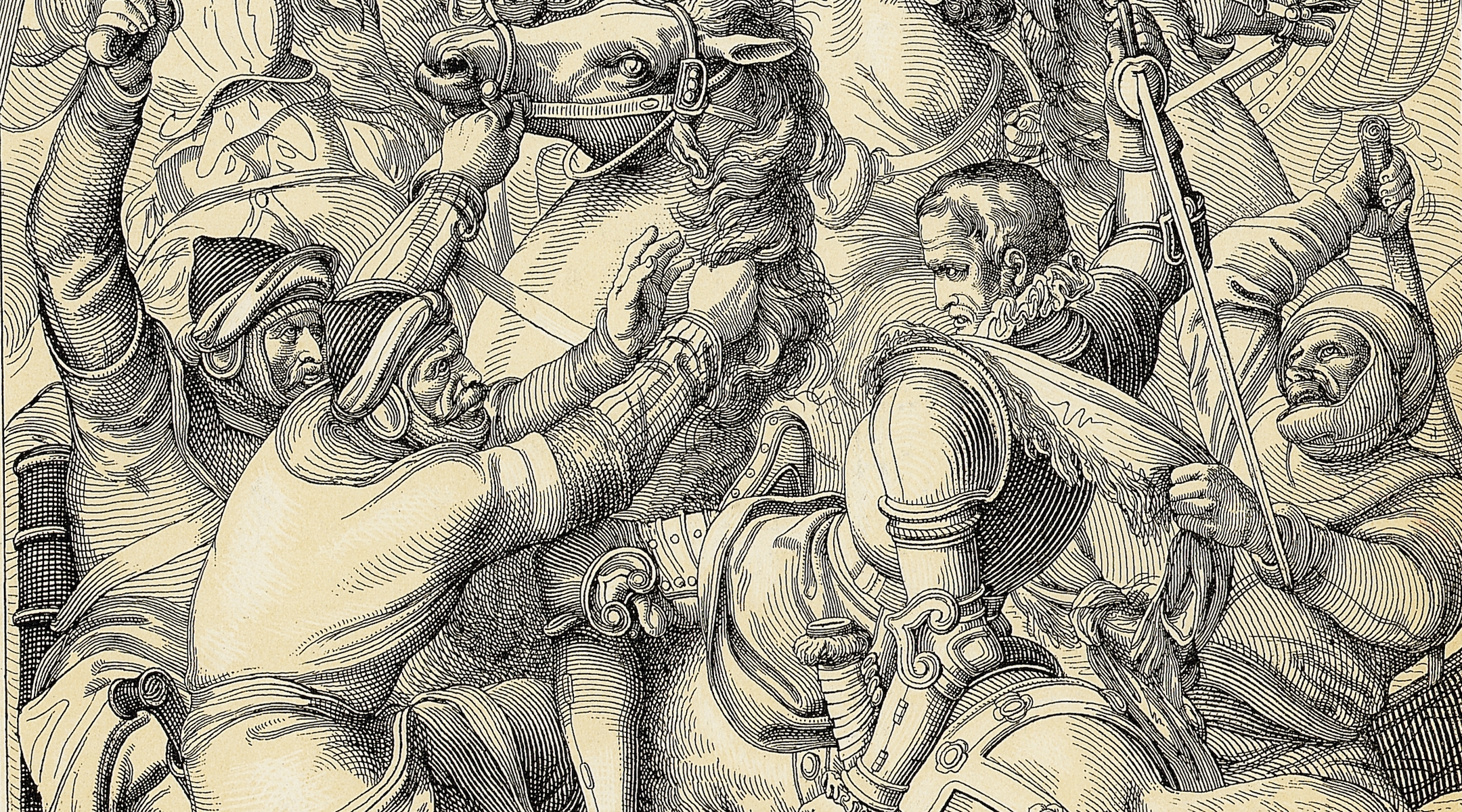
An illustration shows King Sebastian of Portugal being fatally wounded at a battle in Morocco in 1578. (Bettmann/Getty Images)
The extra Purim phenomenon was not confined to Europe.
In Tripoli, Libya, local Jews established the so-called Purim Barghul after the deposition of a local tyrant in the late 18th century. Ali Burghul, an Ottoman officer who was installed after the downfall of the Qaramanli dynasty, ruled the region brutally for two years, treating minorities particularly harshly. After factions of the Qaramanlis were reconciled, Burghul was driven out. Jews would go on to celebrate that day, the 29th of Tevet (usually in January).
(Centuries later, in 1970, dictator Muammar Gaddafi established his own holiday, the Day of Revenge, which celebrated the expulsion of Italian officials from Libya; some say it also celebrated the exodus of Jews since the formation of the state of Israel. Within a few years after Gaddafi’s decree, Libya’s Jewish community had dwindled to less than two dozen, effectively ending the nearly 3,000-year history of Jews there.)
In northern Morocco, Jews commemorated the defeat of a Portuguese king, Don Sebastian, who attempted to take over parts of the country but was defeated in a battle in August 1578. Jews had believed that Sebastian would have tried to convert them to Christianity if he had prevailed.
Today only around 2,000 Jews remain in Morocco, but some Moroccan communities marked the day into the 21st century.
Saragossa
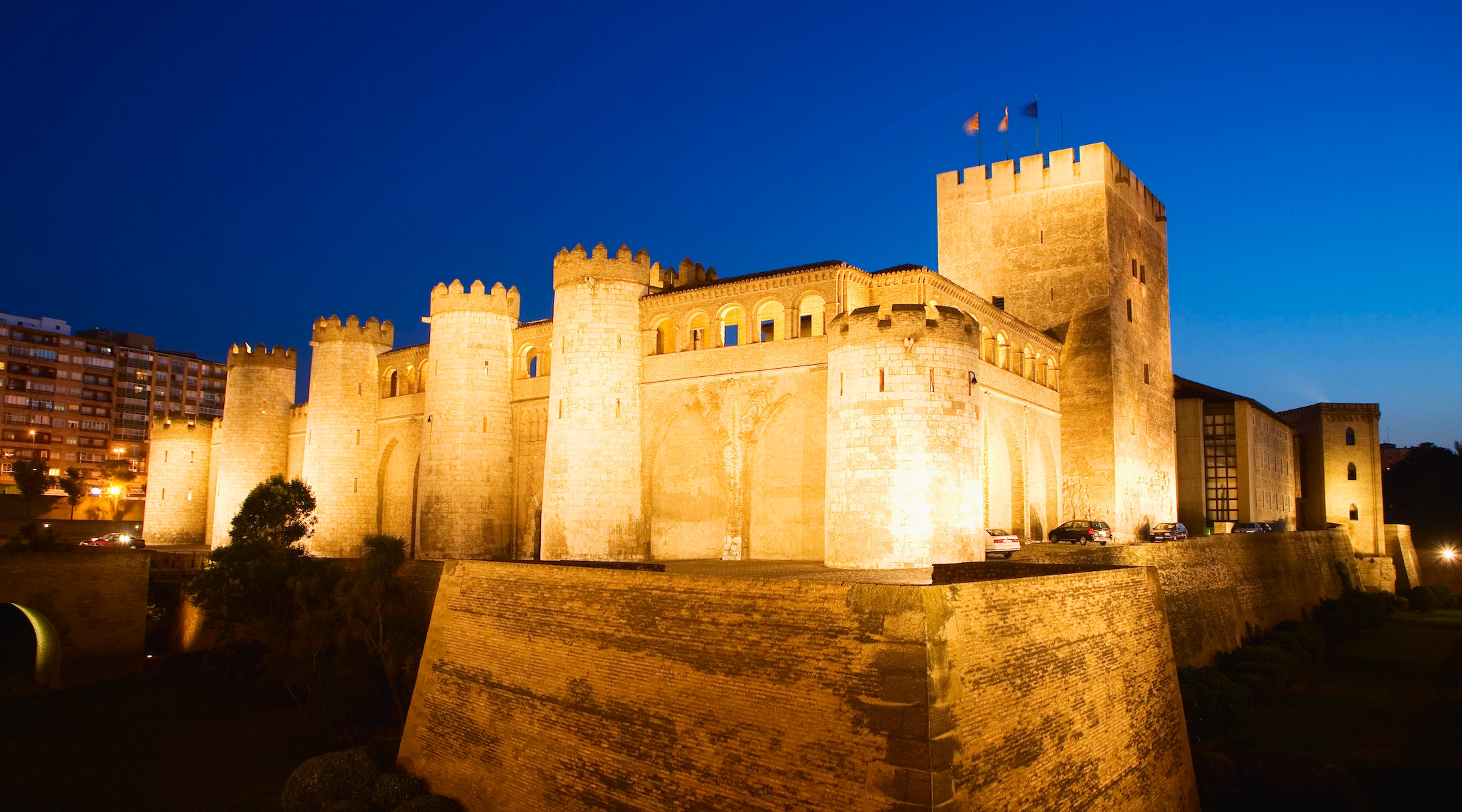
A view of an 11th-century palace in Zaragoza, Spain. The Purim of Saragossa story is set in either Zaragoza or Syracuse, Italy. (Hulton Archive/Getty Images)
Scholars still debate which city was the origin of the Purim of Saragossa story — it could have been Zaragoza in Spain or Syracuse in southern Sicily, which was often referred to in the medieval era as Siragusa. Both cities were part of the Spanish empire in 1492 and were depopulated of Jews following the Inquisition.
Either way, Sephardic descendants in places around the world, including Israel and the Turkish city of Izmir, observed their own Purim story by fasting on the 16th of the Hebrew month of Shevat — generally in February — and feasting on the 17th.
The story tells of an apostate named Marcus who slandered the Jewish community to a non-Jewish king, putting their status in jeopardy. But at the last minute, Marcus’ deception is revealed, and he is executed while the community is saved.
The story could have been entirely fabricated. According to Jewish historian Elliot Horowitz, the establishment of this second Purim story may have been a way for the descendants of Saragossan Jews, whether they are originally Spanish or Sicilian, to maintain a unique identity in the larger Sephardic diaspora.
“The Jewish communities of the eastern Mediterranean in the early modern period were often composed of émigré subcommunities, each of which was distinguished by the customs and liturgy of its place of origin,” he wrote in his 2006 book “Reckless Rites: Purim and the Legacy of Jewish Violence.” “The ‘Purim of Saragossa,’ the earliest manuscript evidence for which dates only from the mid-eighteenth century, may well have been ‘invented’ by former ‘Saragossans’ eager to maintain their distinct identity in the multicultural Sephardi Diaspora of the eastern Mediterranean.”
Regardless of its origins, the Megillah of Saragossa text continued to be published through at least the end of the 19th century. It was well known enough that an American Reform rabbi from New York would publish a stage play based off of it in the 1940s.
JTA has documented Jewish history in real-time for over a century. Keep our journalism strong by joining us in supporting independent, award-winning reporting.
